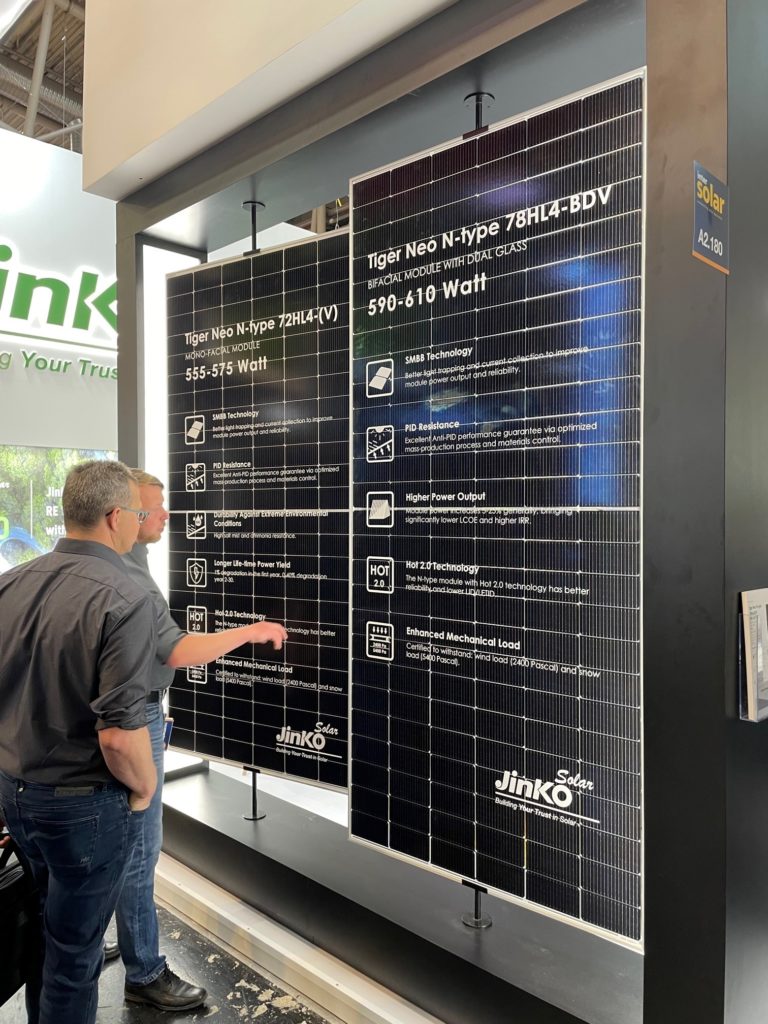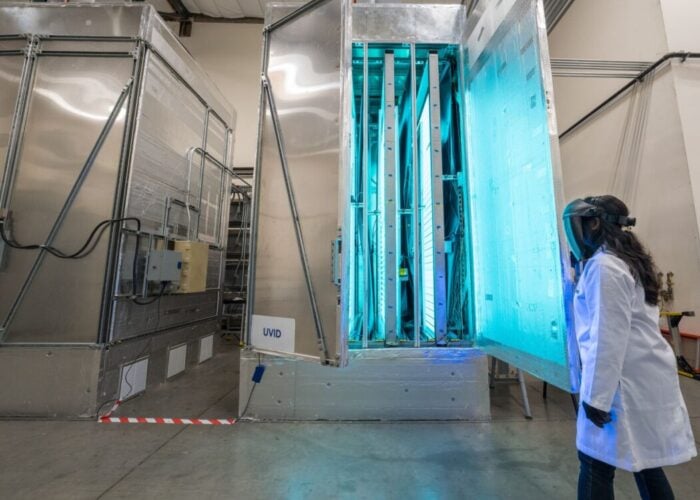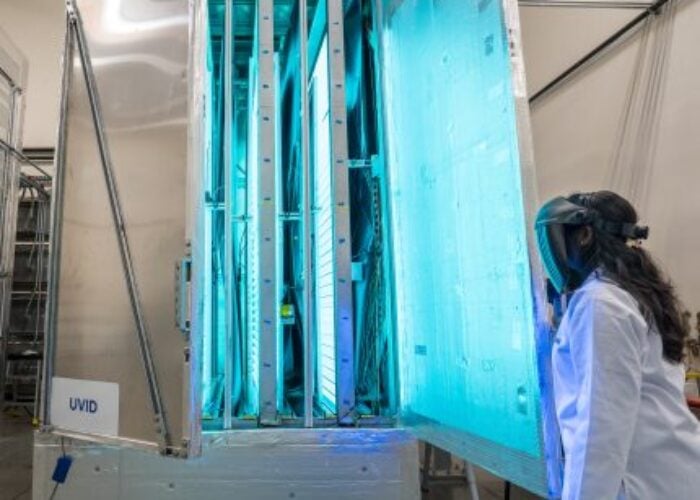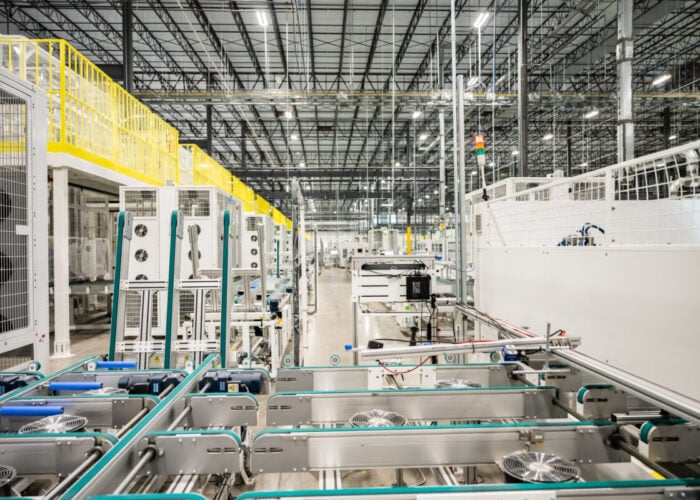
As the scale of manufacturing increases and market shares consolidate, it is becoming increasingly difficult for the solar industry’s heavyweights to take the lead in developing next-generation technology given the cautious nature of investment.
Entering 2022, the industry called for more innovation. And each time, it is the top companies who have pioneered novel technologies or approaches to move the industry forward.
Try Premium for just $1
- Full premium access for the first month at only $1
- Converts to an annual rate after 30 days unless cancelled
- Cancel anytime during the trial period
Premium Benefits
- Expert industry analysis and interviews
- Digital access to PV Tech Power journal
- Exclusive event discounts
Or get the full Premium subscription right away
Or continue reading this article for free
Over the last six months, multiple solar module leaders have launched key new products. Companies such as JinkoSolar, TrinaSolar, JA Solar, Risen Energy, CanadianSolar, Seraphim and Chint have all declared new technologies, while LONGi’s technological secret is still exactly that – a secret – set to be revealed later this year.
Among these new products, whether for large-scale ground-mount projects or for business, household and BIPV markets, the new generation of n-type modules is undoubtedly taking centre stage.
Last week, JA Solar became the latest major module maker to showcase an n-type solar panel. PV Tech has collected the information and summarised these launches.
| Company | Product | Module power (W) | Module efficiency | Wafer size | Module dimensions | Technology platform |
|---|---|---|---|---|---|---|
| LONGi | Hi-MO 5m | 415 | 21.25% | 182 | 1722*1134 | uniform smart soldering, 54-cell |
| TrinaSolar | Vertex S | 435 | 21.80% | 210*182 | 1762*1134*30 | 210R platform, p-type cell, 21.8kg |
| TrinaSolar | Vertex supreme | 580 | 21.50% | 210*182 | 2384*1134*35 | 210R platform, p-type cell, 29.6kg |
| TrinaSolar | Vertex S+ | 420 | 21.70% | 210 | 1770*1096*30 | 210 n-type technology, 21.5kg |
| JA Solar | DEEPBLUE 4.0X | 625 | 22.4% | 182 | 2465*1134 | n-type TOPCon technology, ‘round ribbon with buffer treatment’, ‘gapless technology for micro-cracking’, 33.4kg |
| Jinko Solar | Jingcai BIPV | 375 | 21.54% | 182 | 1420*590*5 | BIPV module with colorful tile options and n-type TOPCon technology, 10.5kg |
| Risen Energy | RSM130-8-430M-450M | 450 | 21.70% | 210 | 1894*1096*30 | Titan series 130 model, MBB, non-destructive cutting and half-cell encapsulation |
| Risen Energy | Hyper-ion | 700 | 22.53% | 210 | 2384*1303*35 | 210 HJT 120 half-cell, micro-crystalline, 24-bb, low-silver paste, alloy steel frame |
| SPIC | Andromeda | 400 | 22.30% | 166 | 1727*1039*30 | n-type IBC technology |
| Canadian Solar | TOPBiHiKu7 | 690 | 22.20% | 210 | 2384*1303*33 | n-type TOPCon bi-facial with SMBB technology, non-destructive cutting |
| Canadian Solar | HiHero | 440 | 22.50% | 182 | 1722*1134*30 | 54-cell n-type HJT technology |
| Seraphim | S5 series N Type | 700 | 22.53% | 210 | 2384*1303*35 | 210 n-type HJT highly-efficient module first debut in Germany |
| Seraphim | S5 Series | 675 | 21.73% | 210 | 2384*1303*35 | 12BB, 0.8mm high-density encapsulation technology, high-strength frame, RX-78-2 junction box |
| Seraphim | S4 Series | 555 | 21.48% | 182 | 2279*1134*35 | 38*30 bi-facial dual glass, PERC, MBB, half-cut and high-density encapsulation |
| Seraphim | S3, S4 Series Light | 460 | 21.25% | 182 | 1909*1134*28 | |
| Chint | ASTRO N6 | 700 | 22% | 210 | / | N-type large wafer, TOPCon highly-efficient cell, MBB+half cell, high-density encapsulation |
| Chint | ASTRO N5 | 570 | 22% | 182 | / | |
| Chint | ASTRO N5s | 420 | 22% | / | / | |
| Akcome | AK iPower 7.0 | 700 | 22.53% | 210 | 2384*1303*35 | 210mm HJT cell with third cell design, low-temperature soldering, 38.7kg |
| REC Group | Alpha Pure-R | 430 | 22.3% | 210 | 1730*1118*30 | HJT half-cell, unleaded, gapless technology, 21.5kg |
| HUASUN | Himalaya G12 | 700 | 22.50% | 210*105 | 2384*1303*35 | N-type large-scale HJT cell, SMBB and pre-cut half-cell wafer, minimum degradation |
| Beyondsun | BiDrive UltraMax series TSBHM660-132HSG | 660 | 21.40% | 210 | 2384*1303*35 | gallium-doped silicon wafer, non-destructive cutting, half-cell MBB, enamelled glass grid, strengthened frame, high current junction box |
| Jinergy | JNMM144 | 550 | 21.29% | 182 | 1755*1038 | 120 mono PERC cell, 2.0 glass and 30mm frame, 15kg |
New module products in Jan-May 2022 by key manufacturers (PV Tech)
New HJT products excelling in high power and efficiency
Among all the new module products, the ones based on heterojunction technology have taken the lead in the power and efficiency stakes.
Among them, the most notable launches are Risen Energy’s Hyper-ion module, the S5 Series n-type HJT module by Seraphim, AK iPower 7.0 by Akcom, Canadian Solar’s HiHero product and the Himalaya G12 series by HUASUN. Their module efficiencies all come in at around 22.5%, while power outputs reach 700W.
As PV Tech has previously reported, Risen Energy’s Hyper-ion adopts thin (120μm) micro-crystalline wafers, 24 busbars, a low silver content paste, alloy steel frame and other cutting-edge technologies. The cost for each production procedure is benchmarked against standard PERC to achieve the goal of high efficiency, high power, and cost-effective advantage.
Generally speaking, the theoretical efficiency of HJT cells can reach 27.5%, and the record for practical conversion efficiency in the industry is 26.3%, set by LONGi. Risen Energy has secured an average efficiency of 25.2% for mass production, with a maximum manufacturing efficiency of 25.6%.
Internationally, REC Group, Meyer Burger and other companies have released HJT modules as well. Among them, REC’s HJT module Alpha Pure-R adopts 80 half-cut HJT cells, gapless layout and lead-free technology, recording a power output of 430W and module efficiency of 22.3%. It has become representative for a new generation of high-efficiency modules made outside of China.
From the perspective of product size and technique, similarities do exist between the aforementioned HJT products, such as large-scale silicon wafers and the use half cell technology, which have become standard in HJT products. However, they each have their own characteristics in terms of size, cell, module technology and other details, such as Canadian Solar’s HiHero, which uses 54 182mm HJT cells.
These modules represent the highest level of HJT products in the industry at present, leading the technology’s advancement.
But HJT is not the only n-type technology making inroads. Among those launched this year is SPIC’s Andromeda module, which is based on interdigitated back contact (IBC) technology and delivers 22.3% module efficiency. Its relative uniqueness in the market has given the product a distinct identity.
There is also Chint’s ASTRO N series modules, namely the ASTRO N6 (700W+), ASTRO N5 (570W+), and ASTRO N5s (420W+), all using n-type TOPCon cell technology.

New launches from Trina Solar and JA Solar under the microscope
JA Solar rolled out its product later than others this year, but has also taken aim at the burgeoning n-type market.
Last month JA Solar unveiled take on the subject in the DeepBlue 4.0X. The new series is based on 182mm wafer and comes in three models – 54, 72 and 78-cell variants, suitable for domestic, large-scale C&I and utility-scale applications respectively.

The new product adopts highly-efficient n-type Bycium+ cell technology, with a manufacturing efficiency of 24.8% or more. At the same time, it adopts high-density encapsulation technology, dubbed GFI, which was independently developed by JA Solar and once unveiled, immediately attracted attention from the industry.
Round ribbon cutting combined with special buffering design, the technology eliminates the risk of hidden cracks in the joints of high-density module cells, enabling JA’s new n-type modules to achieve a maximum power of 625W and a maximum module conversion efficiency of 22.4%.
TrinaSolar meanwhile has looked to strike a balance between its technological foundation and a new wave of innovation.
The new Vertex S and Vertex 550W series, which are beneficiaries of the upgraded 210mm technology platform, adopts 210mm rectangular silicon wafer (G12R) cell technology and module design. It is made in a 210mm×182mm format, different from the conventional 210mm (G12) and 182mm (M10) silicon wafer designs.
“The two new products have four core advantages: first, the power is increased by 20-30W; Second, household roof installation volume is increased by 5.1%; Third, BOS for industrial and commercial roof systems was reduced by 2.4 cents per watt; Fourth, logistics cost was saved by 1-2 cents per watt.’ Yingbin Zhang, head of TrinaSolar’s product strategy and marketing department said.

It is worth mentioning that this series of products adopts mature p-type technologies to maximise the leverage of the entire industry chain value. TrinaSolar has also announced the release of its new Vertex S+ n-type module, which features a glass-glass and advanced 210mm module design. Products come with a 25-year performance warranty and a 30-year power warranty for all types of roofs.
JinkoSolar and LONGi’s next generation rooftop modules
JinkoSolar was the earliest major manufacturer to officially announce its new n-type launch and has sought to position itself as among the frontrunners in the field, aiming at the distributed rooftop market with its Tiger Neo series.
Not to be outdone in catering for the rooftop market, in February this year LONGi launched its Hi-MO5m monofacial module, a 54-cell panel aimed at the global module market with a power output of 415W and module efficiency of 21.25%.
But alongside Jinko’s rooftop series comes a range of n-type BIPV coloured tile products, unveiled in April. The Jingcai BIPV range is the first in the industry to adopt 182mm n-type cell components and provide mass production power outputs of 375W and efficiencies of up to 21.54%.
Risen Energy and GCL have also launched BIPV products. For example, Risen rolled out the ‘Super Top’ series for C&I rooftops and other commercial buildings, and the ‘Super Tile’, designed for use on civil buildings.
GCL, meanwhile, launched its BIPV product – Xinfuwa – at the recent Intersolar Europe exhibition, which adopts the company’s specially designed frame and lock technology. GCL cooperated with leading Chinese colour steel tile manufacturer Beststeel on the product range.






